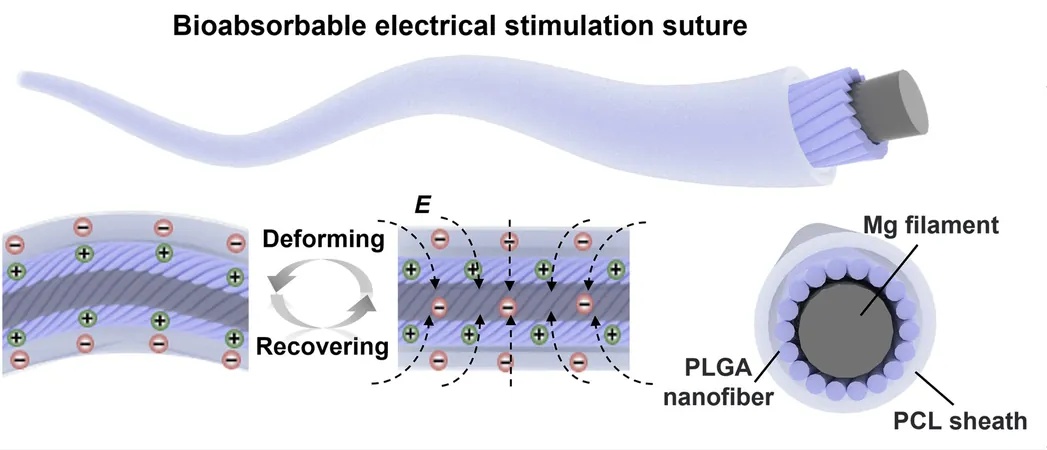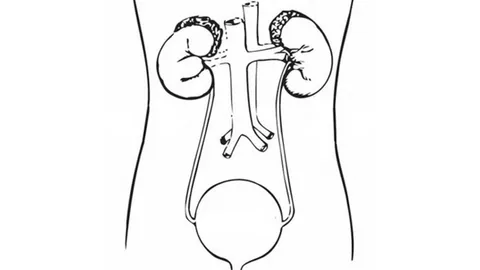
Revolutionary Electrically Charged Sutures Accelerate Wound Healing in Rats: A Game Changer in Surgery!
2024-10-09
Author: Wei Ling
Introduction
In a groundbreaking study, a team of researchers from China has unveiled an innovative solution to enhance postoperative recovery: electrically charged sutures that generate their own electricity. Their findings, published in *Nature Communications*, have shown remarkable results in speeding up the wound healing process in rats, signaling a potential leap forward in surgical recovery methods.
The Role of Electricity in Wound Healing
Electricity has long been known to play a crucial role in wound healing. Previous studies have shown that applying electrical stimulation can attract fibroblasts—key cells responsible for tissue repair. However, conventional conductive sutures often require cumbersome external power sources or bulky batteries, making them impractical for everyday medical use.
Innovative Suture Design and Functionality
The Chinese research team has ingeniously circumvented this limitation by developing sutures that harness energy through the natural movement between the sutures and surrounding tissues. These bio-friendly sutures, crafted from biodegradable polymers and magnesium, are safely absorbed by the body over time, eliminating the need for postoperative removal.
Mechanism of Action
When the tissue around the stitched area moves, it causes friction between the sutures’ inner and outer layers, generating a current of electricity. This electrical stimulation is effectively delivered throughout the suture, promoting enhanced cellular activity and healing where the incision was made.
Size and Efficiency
Remarkably small at just 350 microns in diameter, these sutures are precisely designed for optimal wound closure. Laboratory experiments demonstrated that they could produce an impressive 2.3 volts of energy during routine muscular activity. Most notably, when tested on live tissue, they accelerated healing by a staggering 50% compared to traditional sutures. Additionally, they exhibited reduced bacterial growth, even without traditional disinfectants—indicating their potential to lower infection rates significantly.
Animal Testing and Future Prospects
The success of these sutures did not stop in the lab; testing in live rats yielded promising results, showcasing quicker recovery times and notably fewer infections. Following these encouraging outcomes, the researchers aim to conduct trials on larger animal models before progressing to human clinical trials.
Conclusion and Implications
This breakthrough presents a promising frontier in surgical recovery, potentially revolutionizing postoperative care and setting a new standard for wound management. As this study progresses to human testing, the medical community and patients alike eagerly anticipate the possibility of faster, safer healing processes—and this could be just the beginning!
Stay Tuned!
Stay tuned as we follow this innovative research that could change surgery as we know it!





 Brasil (PT)
Brasil (PT)
 Canada (EN)
Canada (EN)
 Chile (ES)
Chile (ES)
 España (ES)
España (ES)
 France (FR)
France (FR)
 Hong Kong (EN)
Hong Kong (EN)
 Italia (IT)
Italia (IT)
 日本 (JA)
日本 (JA)
 Magyarország (HU)
Magyarország (HU)
 Norge (NO)
Norge (NO)
 Polska (PL)
Polska (PL)
 Schweiz (DE)
Schweiz (DE)
 Singapore (EN)
Singapore (EN)
 Sverige (SV)
Sverige (SV)
 Suomi (FI)
Suomi (FI)
 Türkiye (TR)
Türkiye (TR)